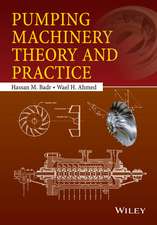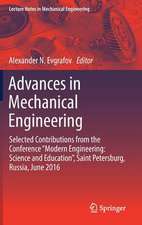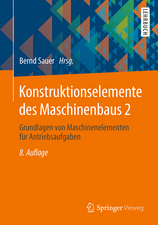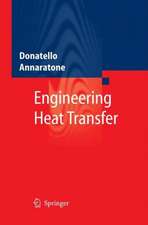Pressure Vessel Design
Autor Donatello Annaratoneen Limba Engleză Hardback – 5 feb 2007
| Toate formatele și edițiile | Preț | Express |
|---|---|---|
| Paperback (1) | 704.69 lei 6-8 săpt. | |
| Springer Berlin, Heidelberg – 14 oct 2010 | 704.69 lei 6-8 săpt. | |
| Hardback (1) | 956.81 lei 6-8 săpt. | |
| Springer Berlin, Heidelberg – 5 feb 2007 | 956.81 lei 6-8 săpt. |
Preț: 956.81 lei
Preț vechi: 1166.84 lei
-18% Nou
Puncte Express: 1435
Preț estimativ în valută:
183.11€ • 198.83$ • 153.81£
183.11€ • 198.83$ • 153.81£
Carte tipărită la comandă
Livrare economică 22 aprilie-06 mai
Preluare comenzi: 021 569.72.76
Specificații
ISBN-13: 9783540491422
ISBN-10: 3540491422
Pagini: 455
Ilustrații: XII, 443 p.
Dimensiuni: 155 x 235 x 30 mm
Greutate: 0.77 kg
Ediția:2007
Editura: Springer Berlin, Heidelberg
Colecția Springer
Locul publicării:Berlin, Heidelberg, Germany
ISBN-10: 3540491422
Pagini: 455
Ilustrații: XII, 443 p.
Dimensiuni: 155 x 235 x 30 mm
Greutate: 0.77 kg
Ediția:2007
Editura: Springer Berlin, Heidelberg
Colecția Springer
Locul publicării:Berlin, Heidelberg, Germany
Public țintă
Professional/practitionerCuprins
Preliminary Considerations.- General Calculation Criteria.- Cylinders Under Internal Pressure.- Cylinders Under External Pressure.- Spherical Vessels.- Heads.- Special Components and Tubes.- The Influence of Holes.- The Influence of Supports.- Fatigue Analysis.
Textul de pe ultima copertă
This book guides through general and fundamental problems of pressure vessel design. It moreover considers also problems which seem to be of lower importance but which turn out to be crucial in the design phase. The basic approach is rigorously scientific with a complete theoretical development of the topics treated, but the analysis is always pushed so far as to offer concrete and precise calculation criteria that can be immediately applied to actual designs. This is accomplished through appropriate algorithms that lead to final equations or to characteristic parameters defined through mathematical equations.
The first chapter describes how to achieve verification criteria, the second analyzes a few general problems, such as stresses of the membrane in revolution solids and edge effects. The third chapter deals with cylinders under pressure from the inside, while the fourth focuses on cylinders under pressure from the outside. The fifth chapter covers spheres, and the sixth is about all types of heads. Chapter seven discusses different components of particular shape as well as pipes, with special attention to flanges. The eighth chapter discusses the influence of holes, while the ninth is devoted to the influence of supports. Finally, chapter ten illustrates the fundamental criteria regarding fatigue analysis.
Besides the unique approach to the entire work, original contributions can be found in most chapters, thanks to the author’s numerous publications on the topic and to studies performed ad hoc for this book.
The first chapter describes how to achieve verification criteria, the second analyzes a few general problems, such as stresses of the membrane in revolution solids and edge effects. The third chapter deals with cylinders under pressure from the inside, while the fourth focuses on cylinders under pressure from the outside. The fifth chapter covers spheres, and the sixth is about all types of heads. Chapter seven discusses different components of particular shape as well as pipes, with special attention to flanges. The eighth chapter discusses the influence of holes, while the ninth is devoted to the influence of supports. Finally, chapter ten illustrates the fundamental criteria regarding fatigue analysis.
Besides the unique approach to the entire work, original contributions can be found in most chapters, thanks to the author’s numerous publications on the topic and to studies performed ad hoc for this book.
Caracteristici
Develops operational guidelines of calculation criteria Provides concrete and precise calculation criteria which can be immediately applied to actual designs Comprises unique contributions on important topics like Deformed Cylinders, Flat Heads, or Flanges Includes supplementary material: sn.pub/extras




















